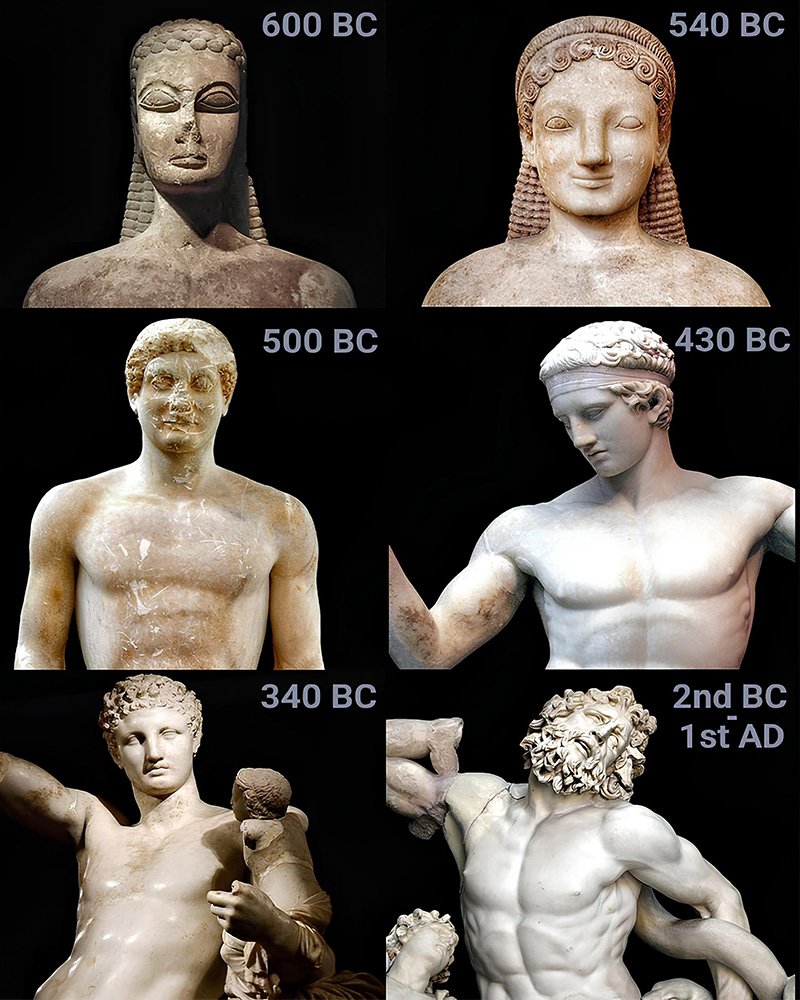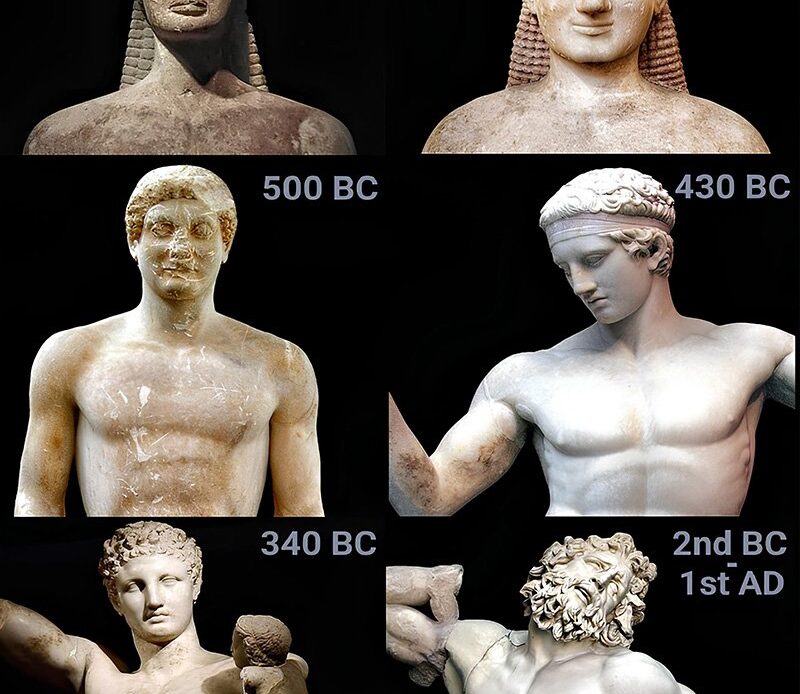The artistic progression of ancient Greek statues is a fascinating reflection of the cultural and technical advancements of the time. Through iconic works spanning centuries, the evolution of artistry is elegantly demonstrated, showcasing how ancient sculptors transformed rigid forms into dynamic expressions of realism and emotion.
**600 BC: The New York Kouros**
The New York Kouros, crafted around 600 BC, serves as a hallmark of the Archaic period. Characterized by its rigid posture and stylized design, this statue embodies the era’s preference for symmetry and formality. The figure’s stiff stance, with one foot forward and arms tightly by its sides, reflects minimal attention to anatomical accuracy or natural movement. Despite its simplicity, the New York Kouros symbolizes the early ambitions of Greek sculptors to represent the human figure.

**540 BC: The Peplos Kore**
By 540 BC, Greek sculpture began to shift towards more naturalistic forms, as seen in the Peplos Kore. While retaining a formal stance, this statue features a softer and more lifelike representation. Draped in a flowing peplos, the figure hints at a growing interest in capturing the subtle curves and textures of the human body. This period marks an essential step toward bridging the gap between stylization and realism.
**500 BC: The Kritios Boy**
The Kritios Boy, created around 500 BC, signifies a groundbreaking moment in Greek art. This statue introduces contrapposto—a realistic pose where the weight is shifted onto one leg—resulting in a natural alignment of the body. The Kritios Boy showcases accurate anatomical proportions and a hint of movement, reflecting an evolving understanding of human anatomy and a desire to portray life-like figures.
**430 BC: Diadoumenos**
By 430 BC, the Diadoumenos illustrates further advancements in Greek sculpture. This statue, depicting an athlete tying a victory ribbon, reveals enhanced muscle tone and a fluid posture. The detailed rendering of muscles and a relaxed yet poised stance emphasize the Greek ideal of physical perfection, symbolizing both beauty and strength.
**340 BC: Hermes and the Infant Dionysus**
The expressive Hermes and the Infant Dionysus, crafted around 340 BC, showcases the maturity of Greek artistry during the Late Classical period. This statue exudes grace, capturing a tender moment between the messenger god and the infant Dionysus. The intricate drapery, delicate facial expressions, and dynamic composition highlight the sculptors’ ability to convey emotional depth alongside physical beauty.
**2nd Century BC – 1st Century AD: Laocoön and His Sons**
The Hellenistic period, extending from the 2nd century BC to the 1st century AD, brought heightened realism and emotional intensity to Greek sculpture. Laocoön and His Sons is a masterful representation of this era, depicting the tragic struggle of the Trojan priest and his sons against sea serpents. The dramatic composition, vivid expressions of anguish, and intricate attention to muscular detail make this statue a pinnacle of ancient Greek art.
The evolution of ancient Greek statues reflects a journey from rigid formality to dynamic realism and emotional depth. Each notable work—from the New York Kouros to Laocoön and His Sons—offers a glimpse into the shifting priorities and growing expertise of Greek sculptors. These masterpieces not only celebrate the beauty of the human form but also encapsulate the artistic spirit of an enduring civilization.
